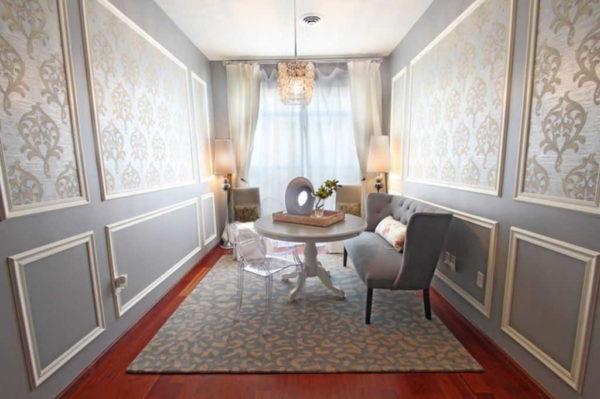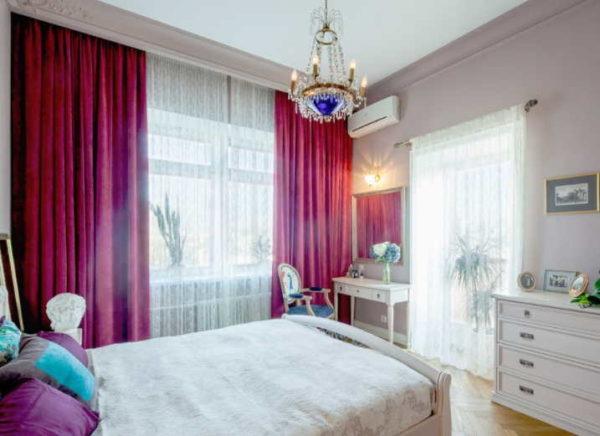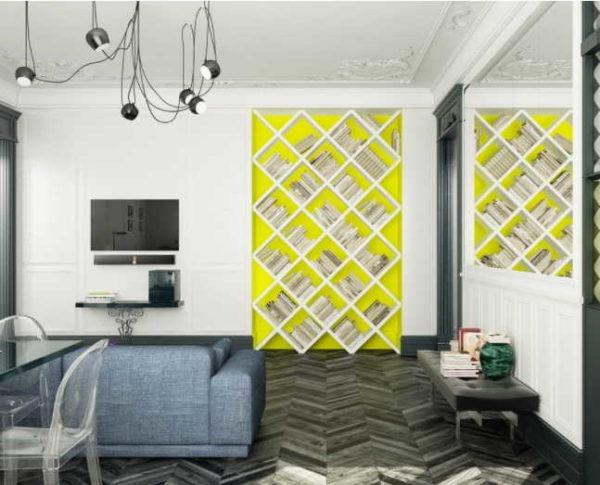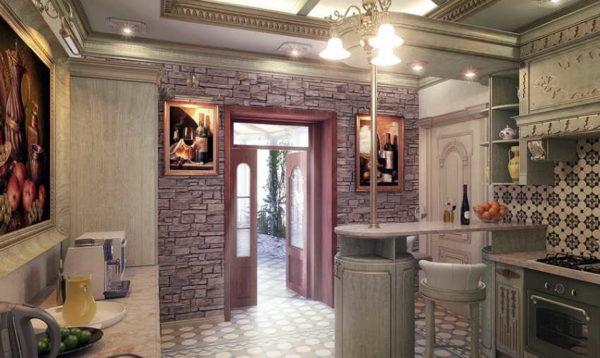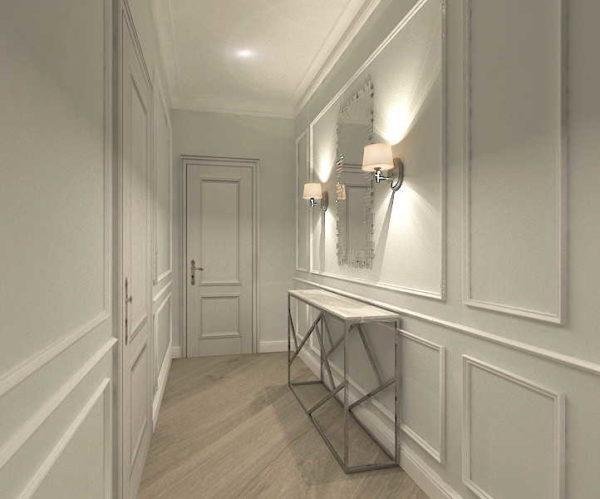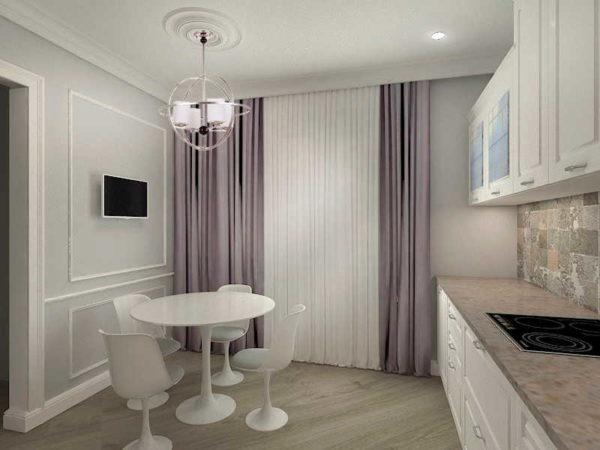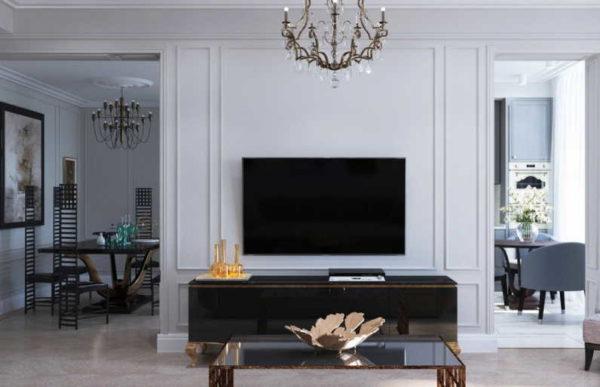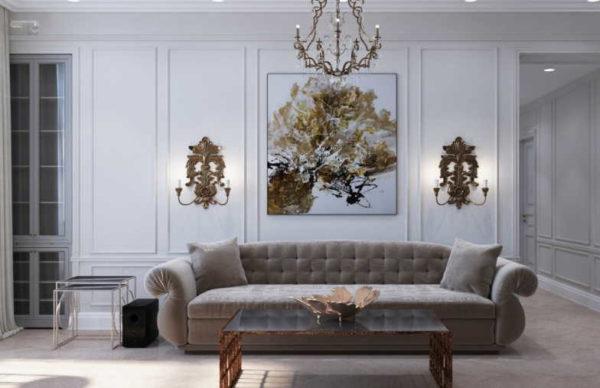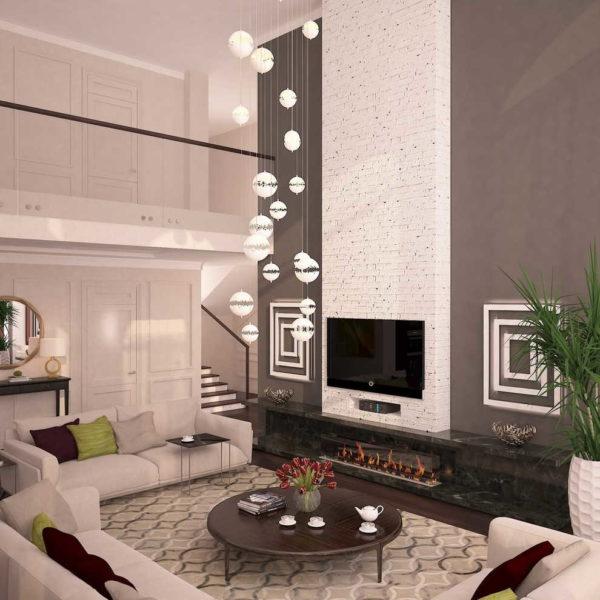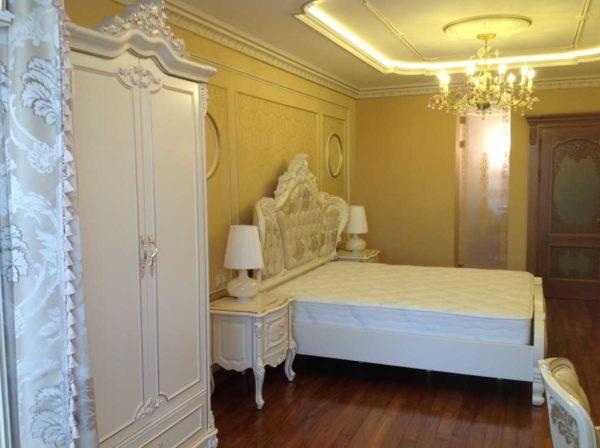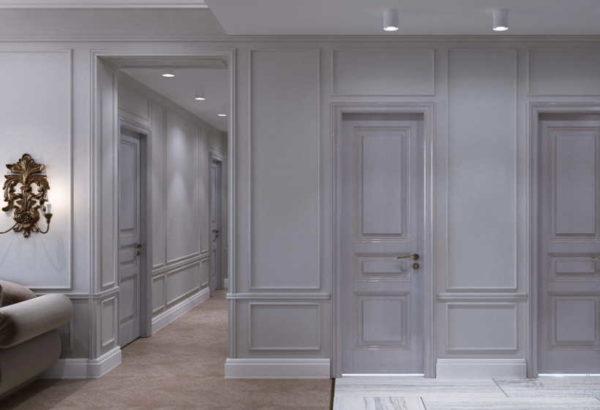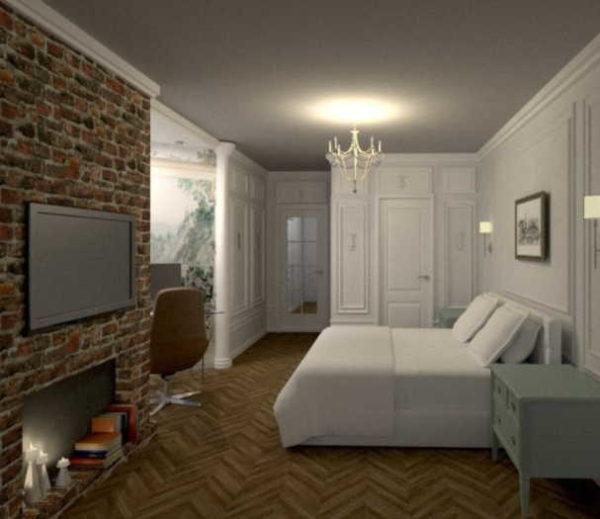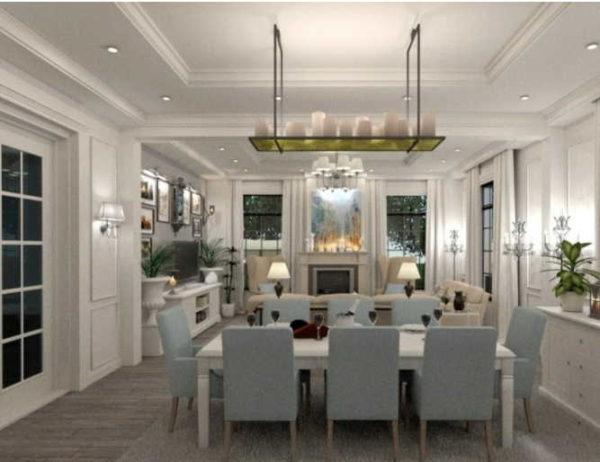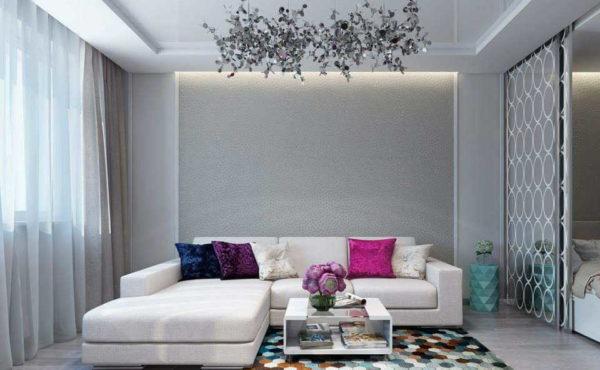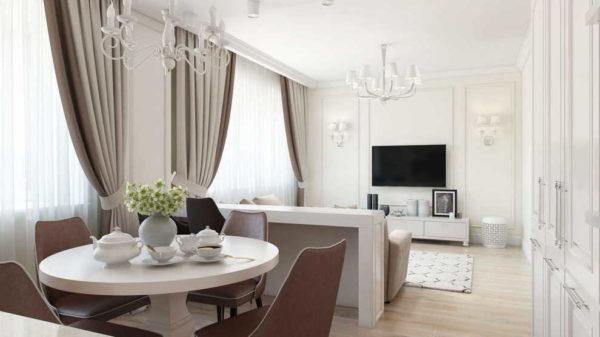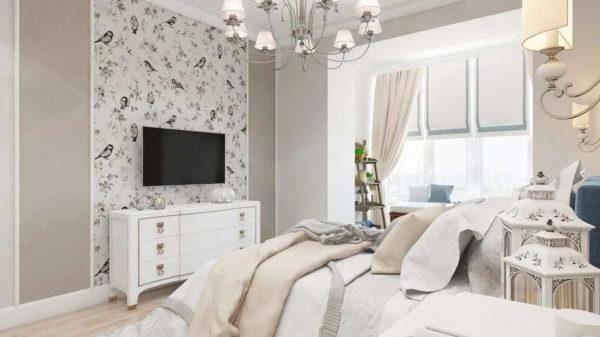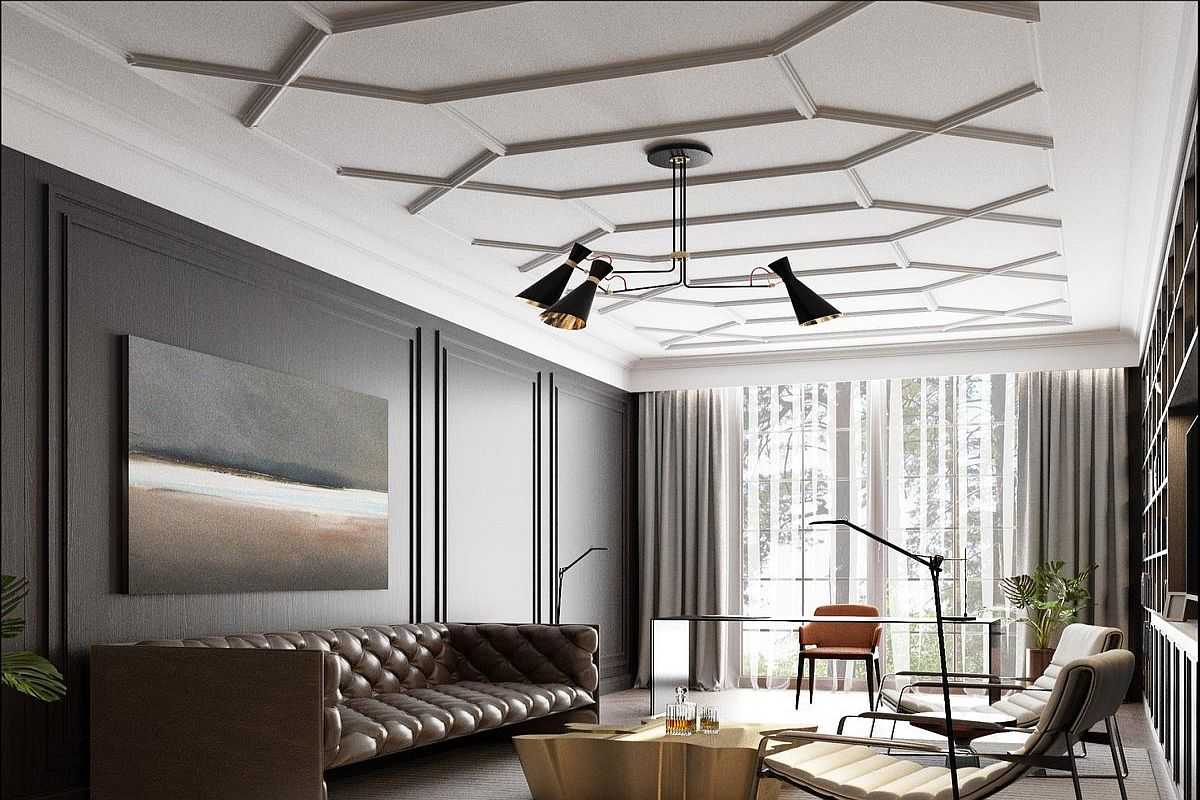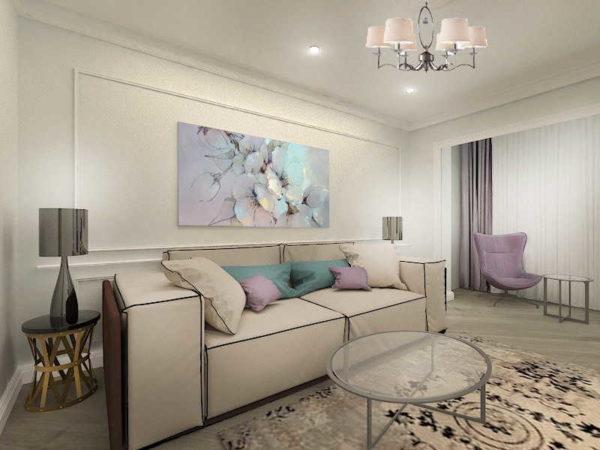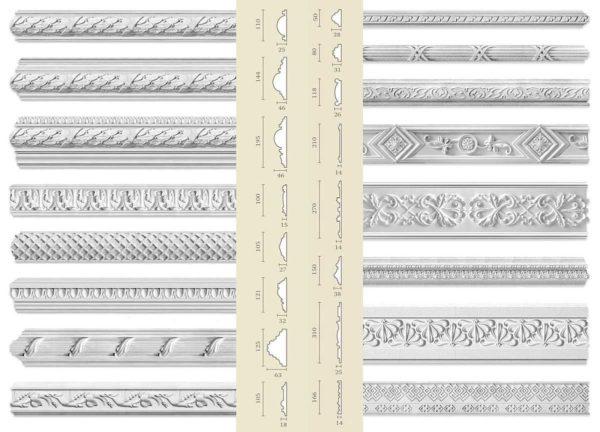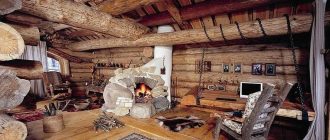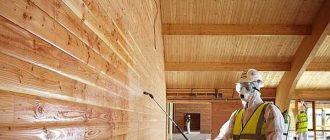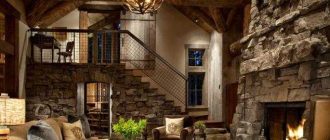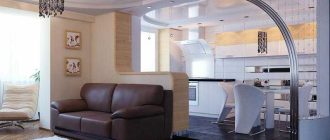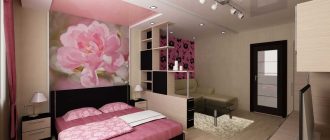Developing the decor of rooms, you want to make them beautiful and unique. One of the techniques – moldings in the interior. These decorative strips help to make the room more interesting and harmonious.
Περιεχόμενα του άρθρου
What are moldings and what are they like?
Molding is a decorative strip of convex or concave shape. It is used for decoration, harmonization of interiors, visual correction of room deficiencies. Moldings are narrow – a couple of centimeters wide, and wide – up to 20 cm. They are used for interior and exterior decoration, can be rigid or flexible. There are with a longitudinal relief (most often), with vegetative or geometric ornament.
According to the place of installation moldings are ceiling, wall, corner. Corner usually put at the junction of the wall and ceiling. Make moldings from:
- Styrofoam. The cheapest. Have a slightly loose surface, so that go only under putty and painting. Mounted on a flat wall with glue.
- Polyurethane. More expensive, dense, with a smooth surface. On the walls and ceiling are also glued.
- Plastic. Smooth with a shiny surface. Well washable, have a long service life, but are not combined with all materials, not suitable for all interiors.
- Gypsum. Heavier, made by casting. Solid elements are fixed with nails or self-tapping screws, thinner ones can be glued on a special adhesive composition.
- Wood. Wooden moldings are attached to finish nails or to ordinary nails without flats. It is possible to glue with carpenter’s glue. Well fit into classical, Scandinavian, Russian interiors. All those in which in one form or another there is a wooden finish or decorative items.
- Metal. Very durable, but metal moldings can be used only in interiors of a certain type – minimalism, high-tech, loft.
- Polymer flexible. For finishing columns and rounded walls use polymer flexible moldings. They are attached with the help of glue.
Gypsum moldings appeared in ancient times. It is they became a model for which were created decorative strips for interior decoration of more modern and cheaper materials – foam and polyurethane.
Where can be used
Moldings in the interior are used in the following cases:
The main function that moldings in the interior perform is decoration and embellishment. In places where materials with different thickness, texture, color meet, this method of decoration allows you to turn an unaesthetic transition into an element of decor. The method is easy to install, most of it has a small cost.
At the junction of different materials
If tiles or wall panels are laid only on part of the wall, the place of transition from tile/plastic to a flat wall does not have a very presentable appearance. In order to make this transition more attractive, use a special border tile, but it is too expensive – much more expensive than the usual. It is no less interesting to decorate this joint with the help of moldings. Decorative bar is mounted so that it covers the place of the joint.
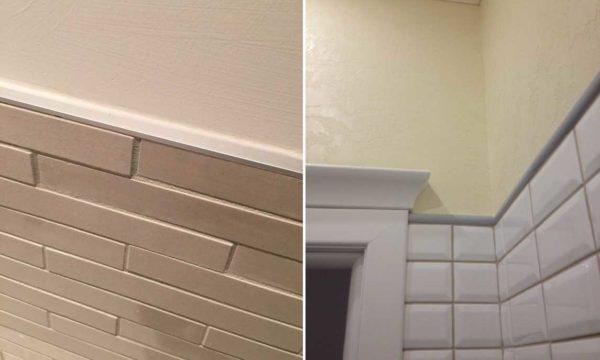
The width and thickness are selected for the specific interior and the thickness of the materials to be joined. Since we are usually talking about the bathroom, toilet or kitchen, it is advisable to use materials that are easy to clean and are not afraid of high humidity. The optimal choice for the tile joint is polyurethane. It can then be painted in the same color as the wall or tiles.
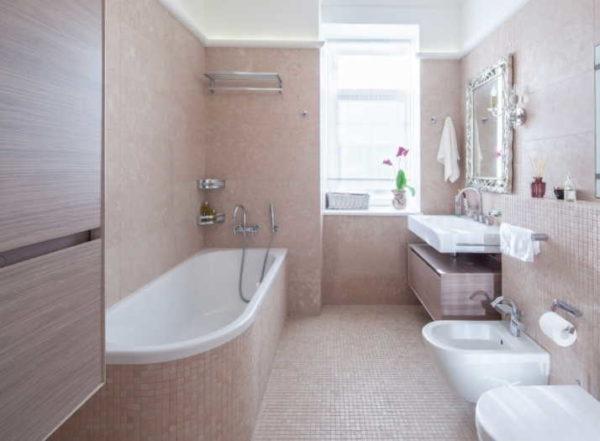
If the transition between plastic panels and painted/bleached wall is decorated, you can use a plastic skirting board. Wooden panels or MDF panels, it is better to join the walls with the help of wooden moldings.
The same technique works very well when you have to join two colors or two textures. To separate and harmonize the joints use moldings. It can be an accent wall, which is now very fashionable.
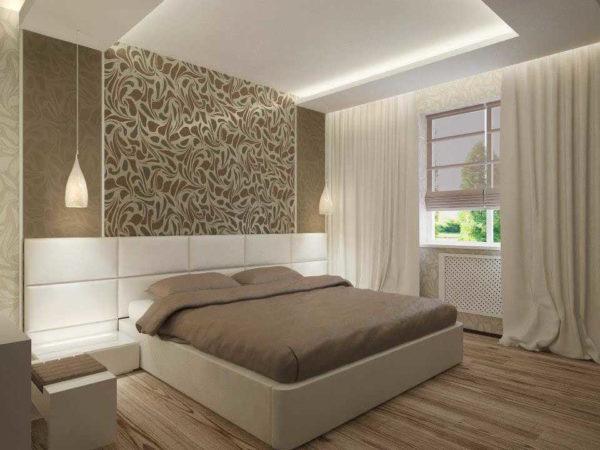
But the accent wall does not necessarily have to be a different color or pattern from beginning to end. Here for such a case – if a different color canvas or material occupies only part of the wall – and moldings are useful. They give a finished look to this finishing element.
Moldings on the ceiling
The ceiling is very often decorated with moldings. A large empty area so begs to be decorated with something. Usually install a corner molding at the junction of the wall and ceiling. It can be thin and simple – with a simple relief, or it can be wide, patterned, under the stucco. And this type of decoration is good not only for classical interiors. It fits into the loft and other modern trends, except for minimalism, except that.
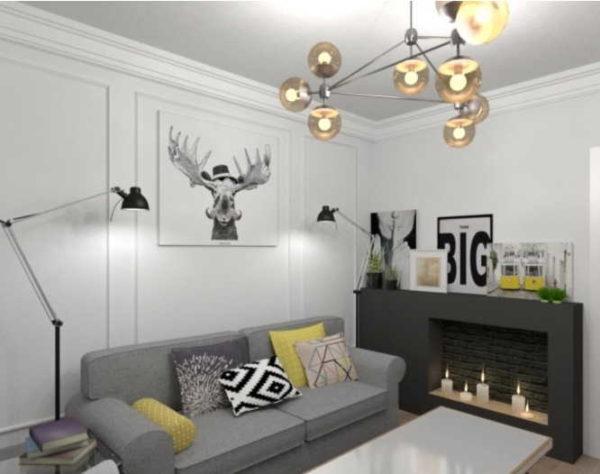
In addition, several decorative fragments can be located on the ceiling. For example, several moldings of different widths, but with similar decor and profile. They can be placed at a distance from each other. Often in the corners use decorative fragments in the form of curls, curved to the other side of the corners, half arcs and other similar decorations. Even put decorative ceiling rosettes under the central chandelier in interiors of classical orientation.
But not only in the corner or near it can be mounted ceiling moldings. With their help you can create a unique ornament on the ceiling. Geometrically correct figures are created with the help of polyurethane or plaster strips. With the help of flexible moldings, you can make smooth lines.
There is another technique – coffered ceiling. This technique is usually used if you need to hide the beams or some flaw in the ceiling. In this case, also often use moldings for decoration.
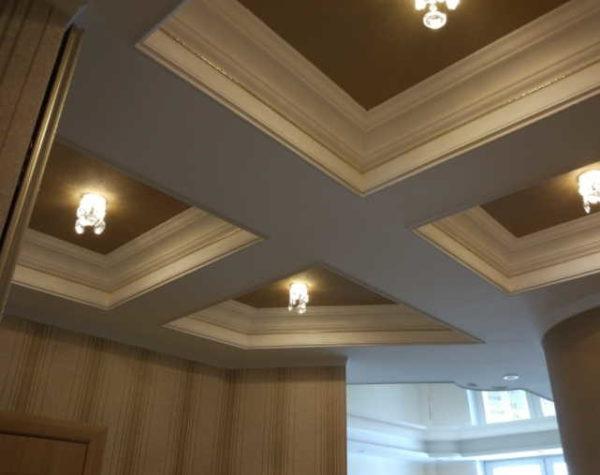
Recently, in most cases, polyurethane moldings are used in the interior. They are durable, easy to install, not too expensive. All this makes them very popular.
Moldings on the walls
Wall moldings are not only strips. From these elements make frames that can limit just a part of the space in which a mirror or a picture will hang. Such an allocation helps to more clearly organize the space, highlight the subject.
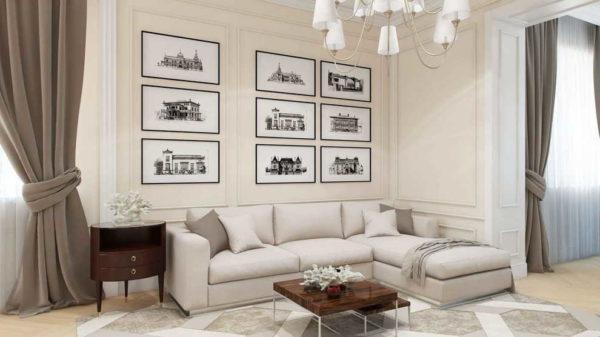
More frames from moldings can be filled with other finishing material. In the past, tapestries, brocade and other expensive fabrics were inserted into such frames. Today, it is increasingly common to use a different kind of decorative putty, wallpaper or just a different shade of paint.
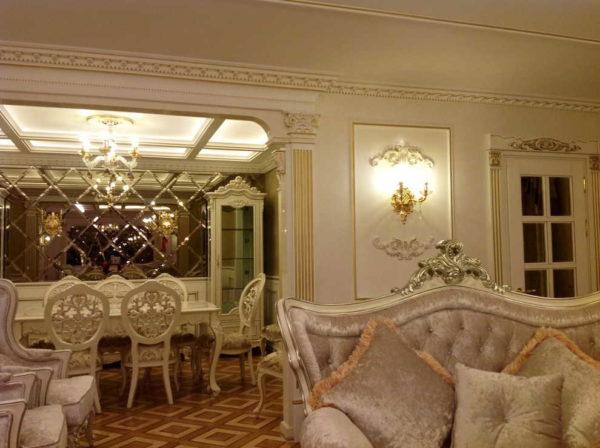
Another common technique is the design of doorways. In addition to the standard framing of the opening, there are also frames above the door. This space is usually left empty and is not used in any way. To ensure that there is no imbalance in the complex decoration, molding is also glued here.
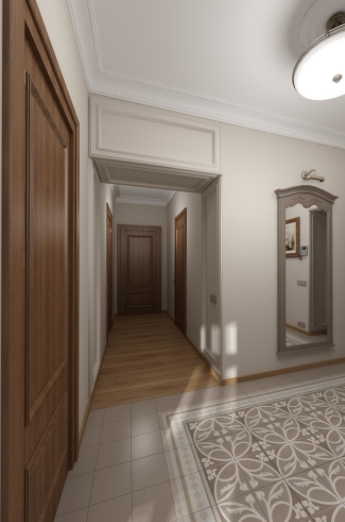
With the help of wall moldings, you can visually make the ceilings higher. To do this, at a certain interval, strips are installed. From them you can not only make frames. These are decorative strips, and from them it is not too difficult to make patterns.
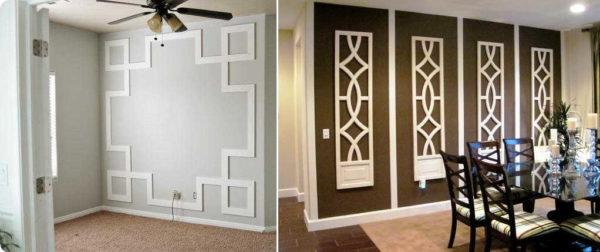
All these methods of decorating require a large space, otherwise the room is too “overloaded”. In small rooms, if used, then usually only strips at the junction of the wall and ceiling, yes, maybe a couple of thin strips to separate different textures or colors. Most often you can see moldings in the interior of the living room – these rooms are usually the most spacious. Not bad looking moldings in bedrooms, but not in small, but at least medium.
Moldings in the interior: photos, ideas
When decorating rooms with moldings, it is necessary to take into account not only the geometry of the room, but also the style of design of furniture items. Decorative strips should have common features with the design of other interior items. Then the design will be coordinated and harmonious.
